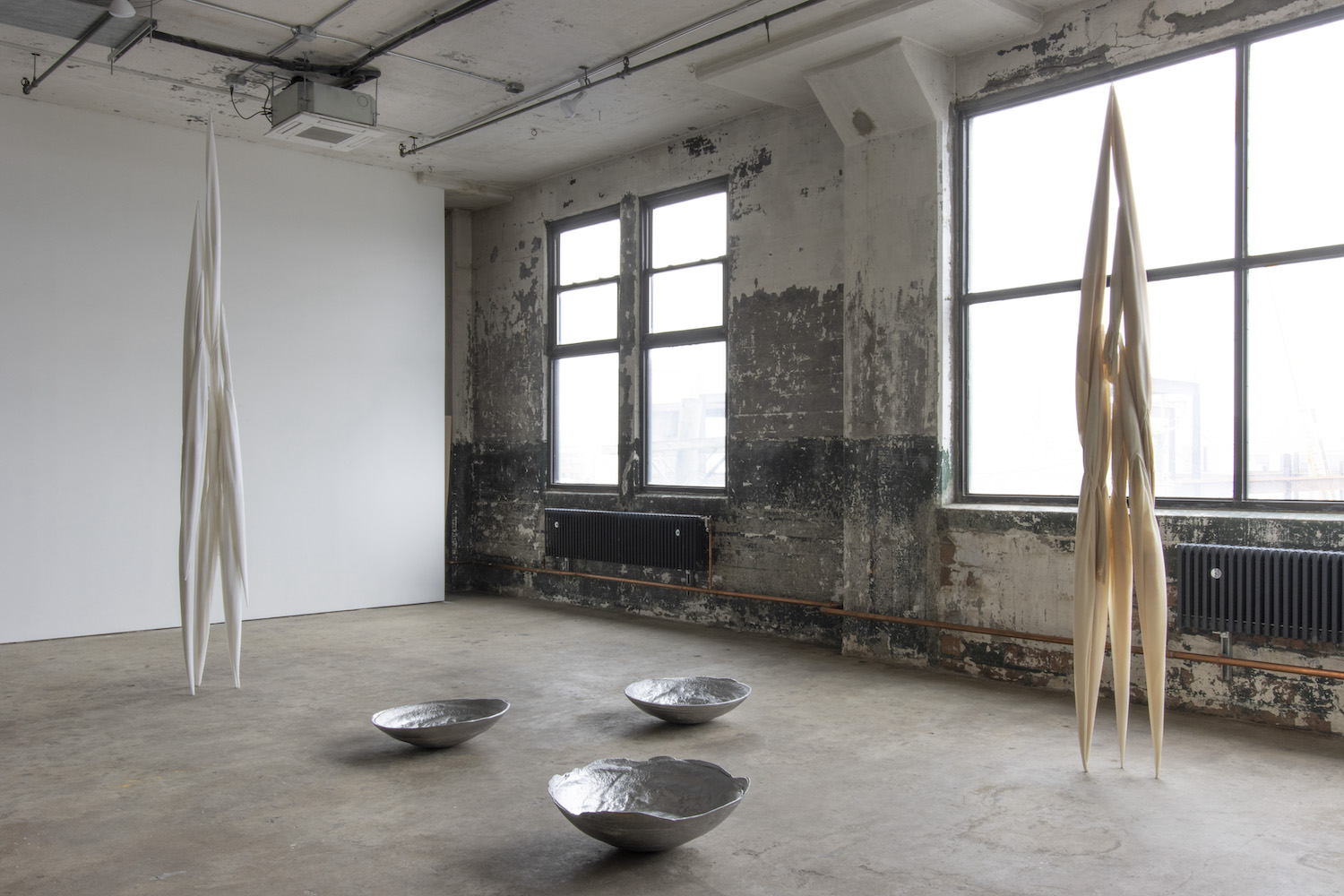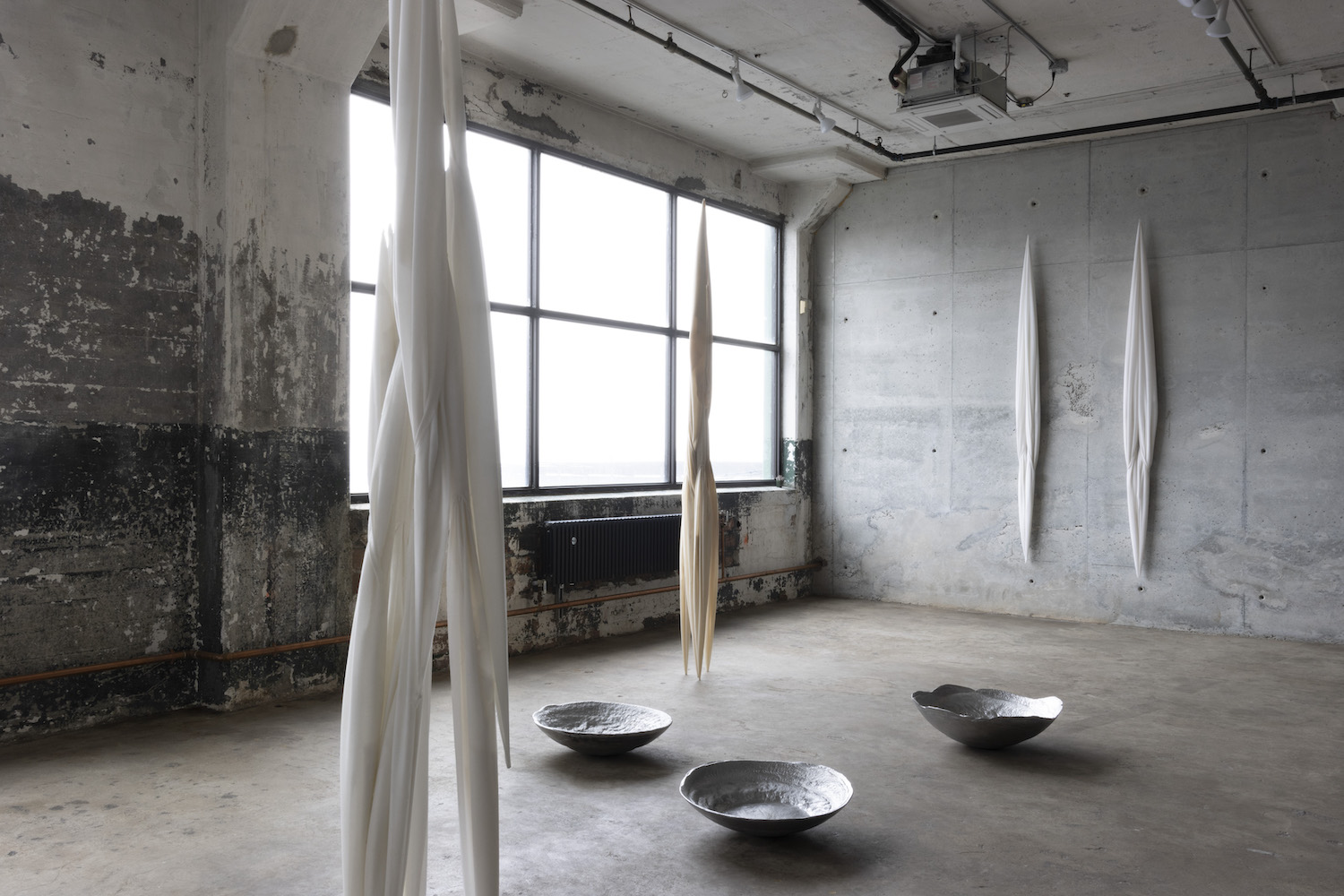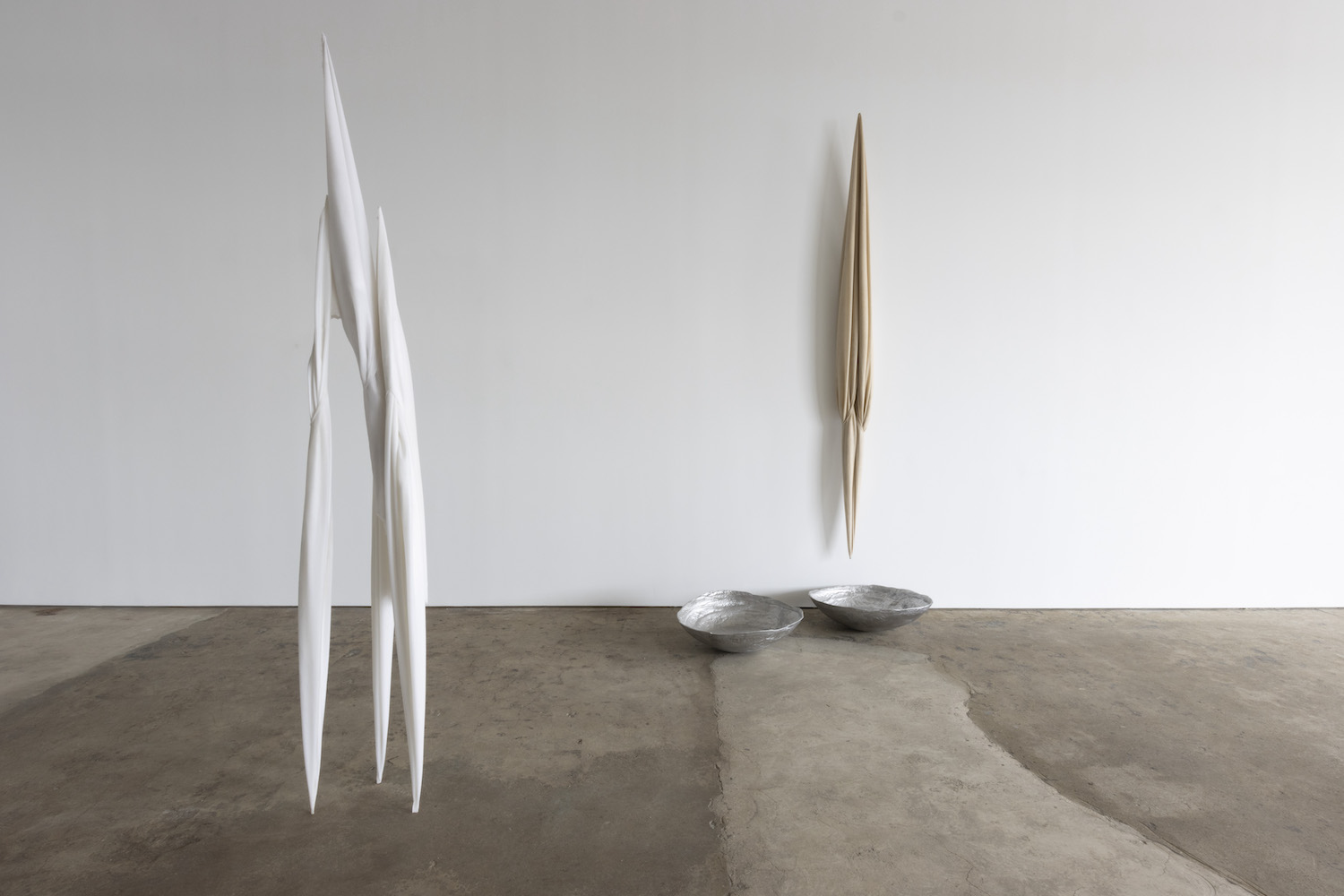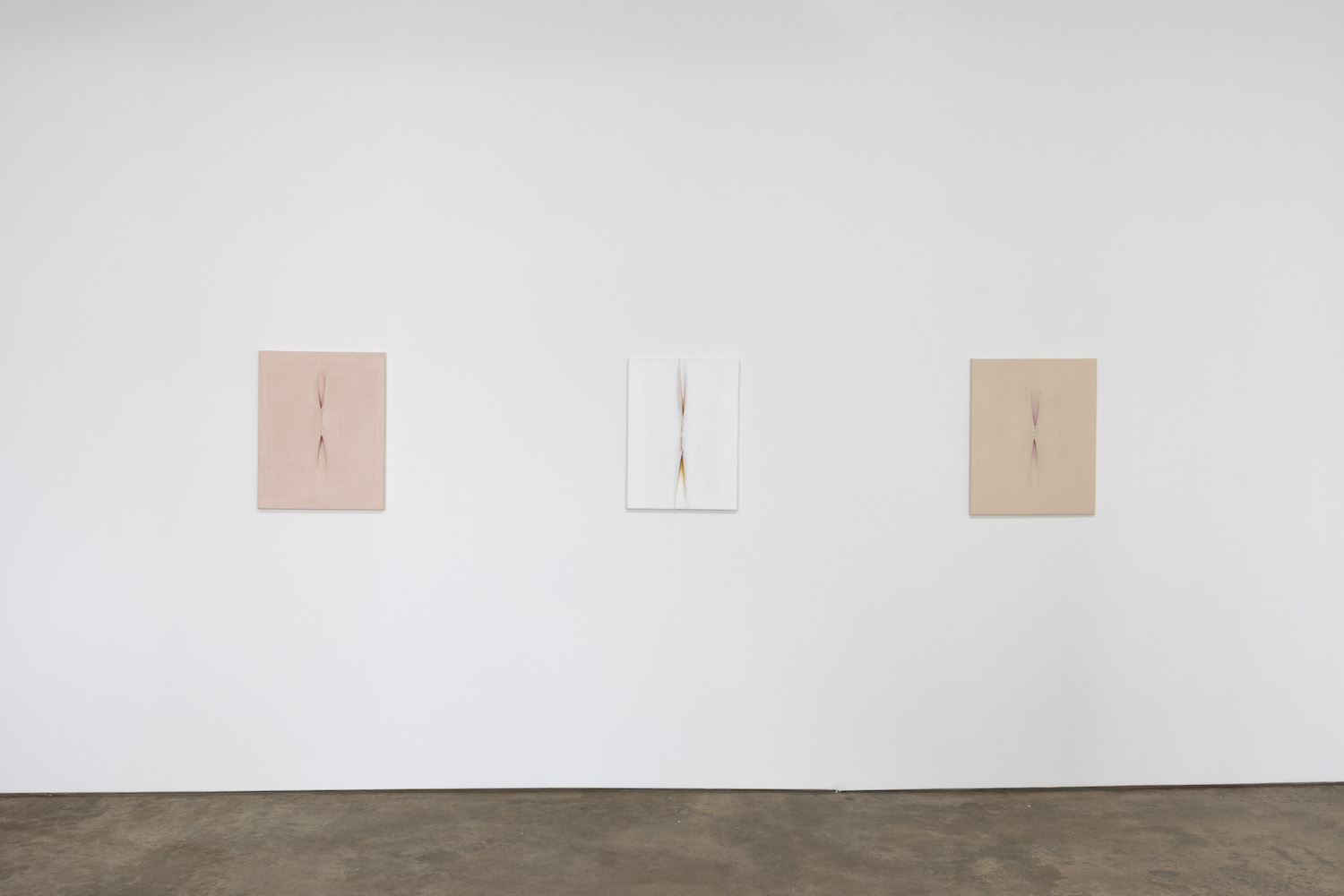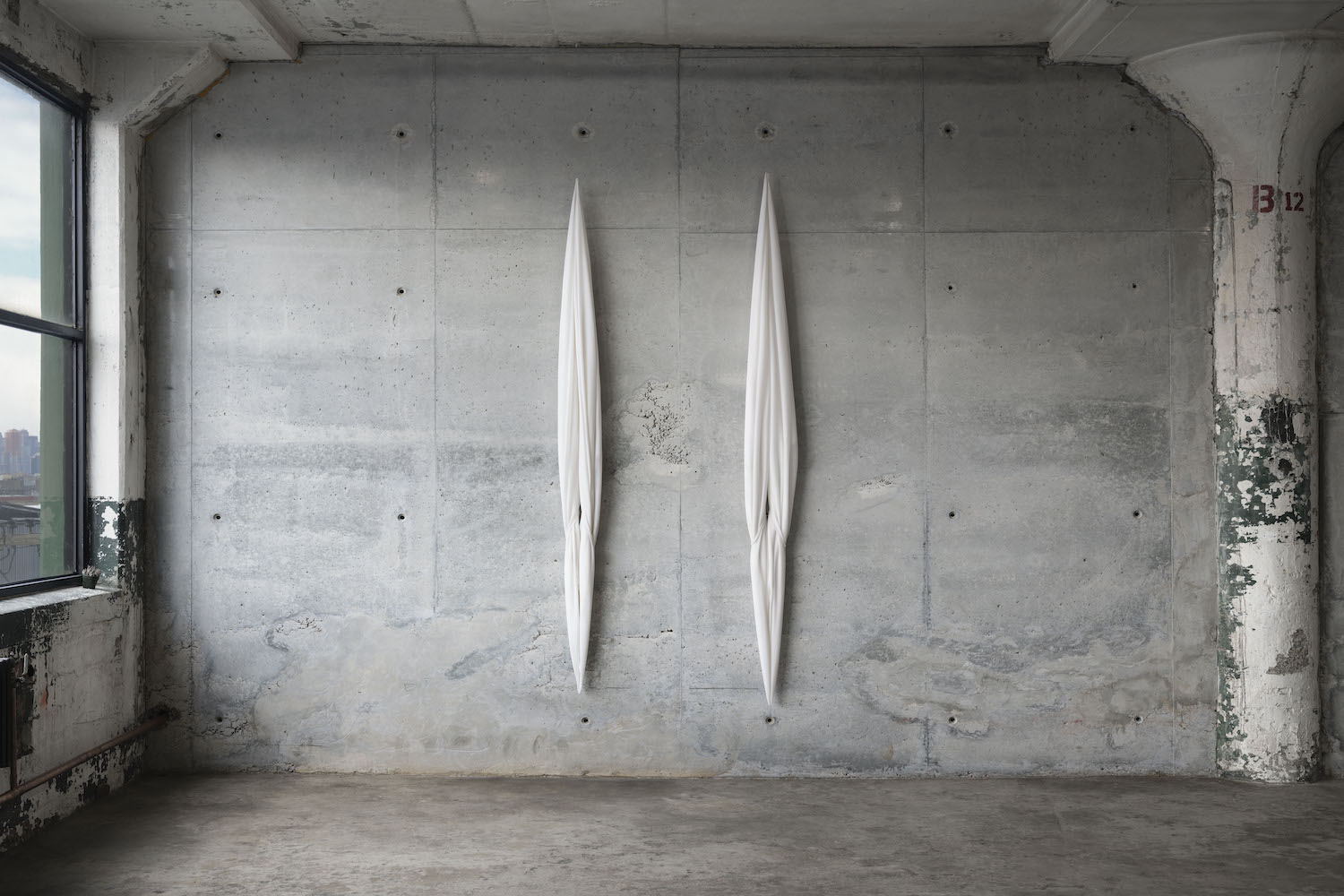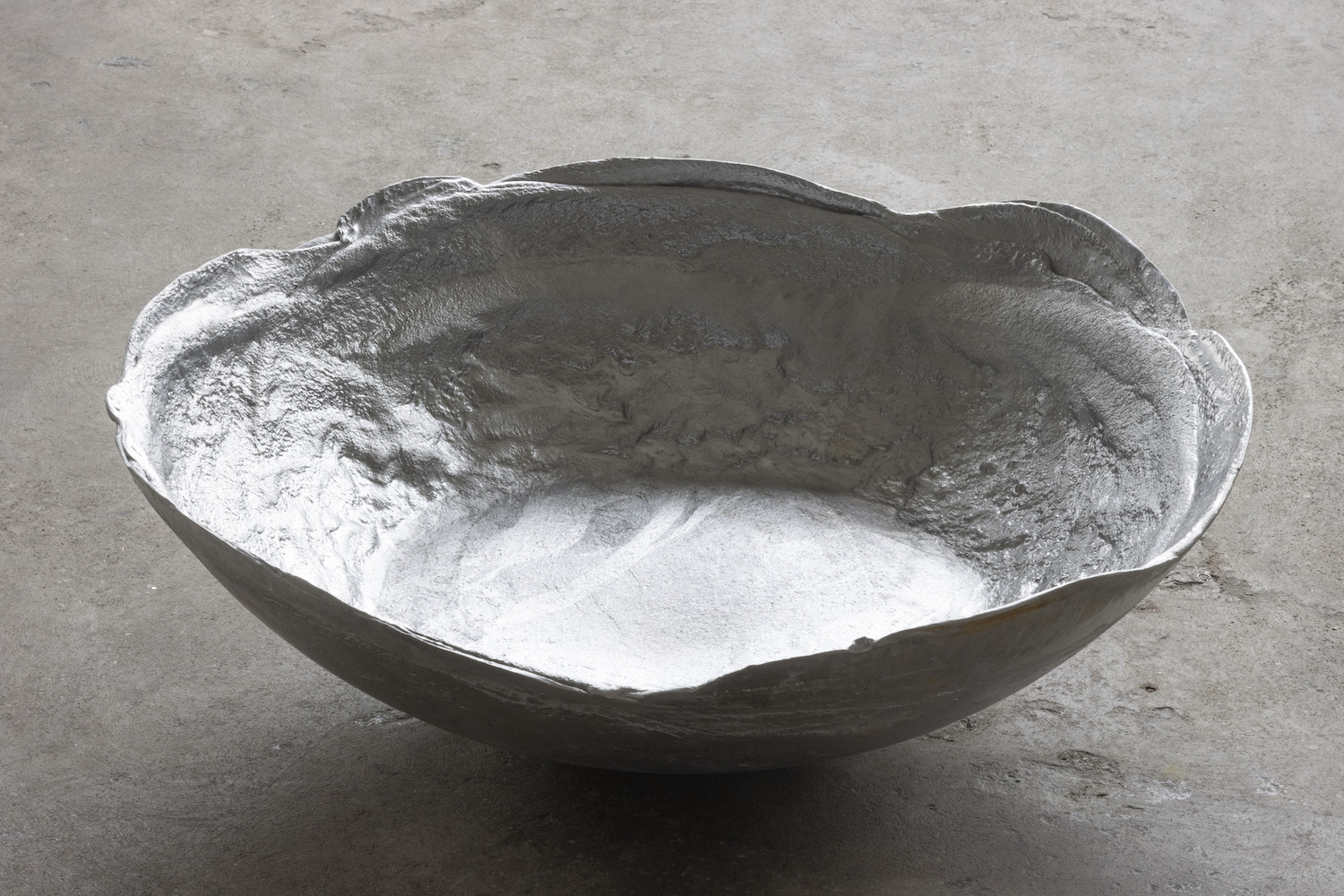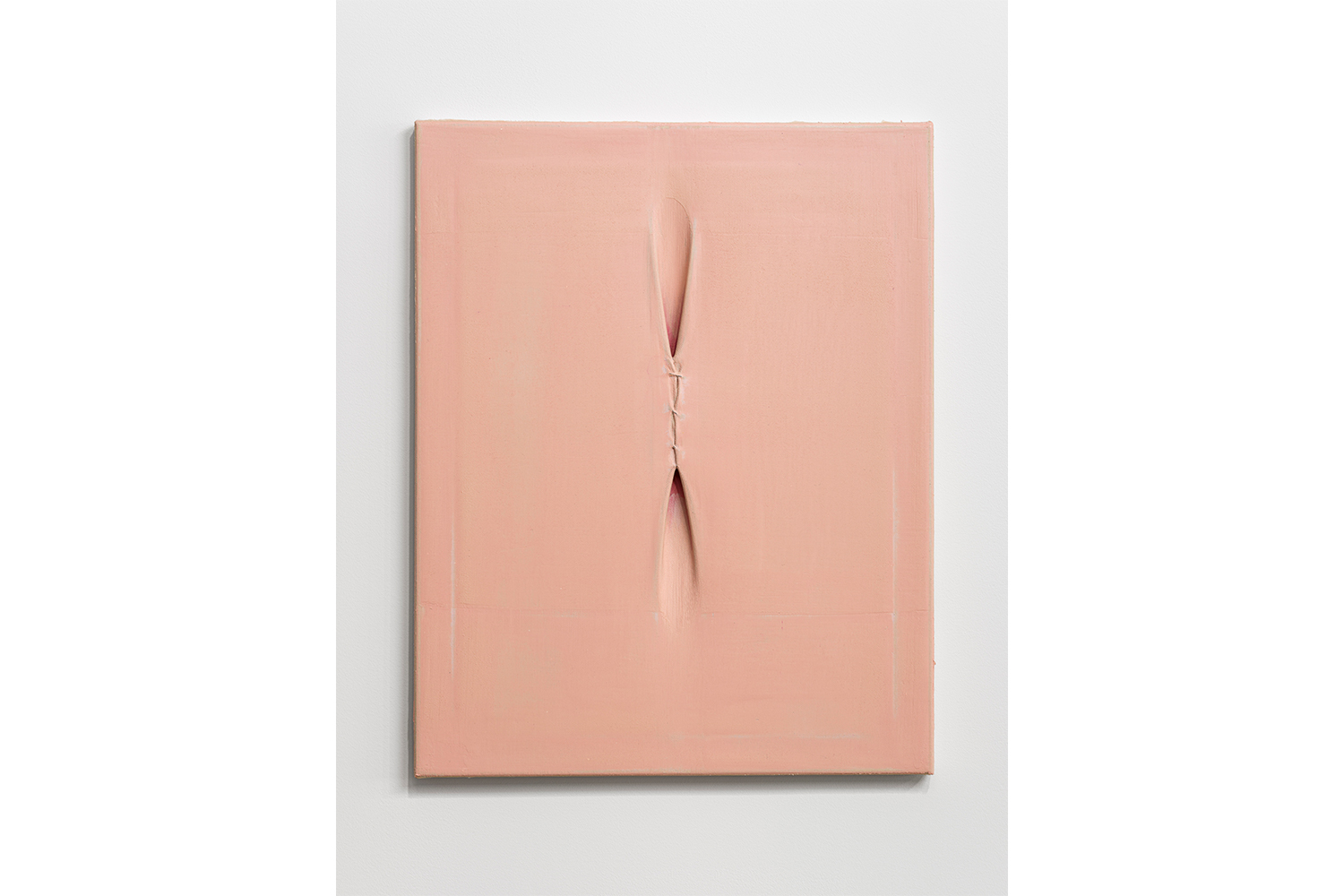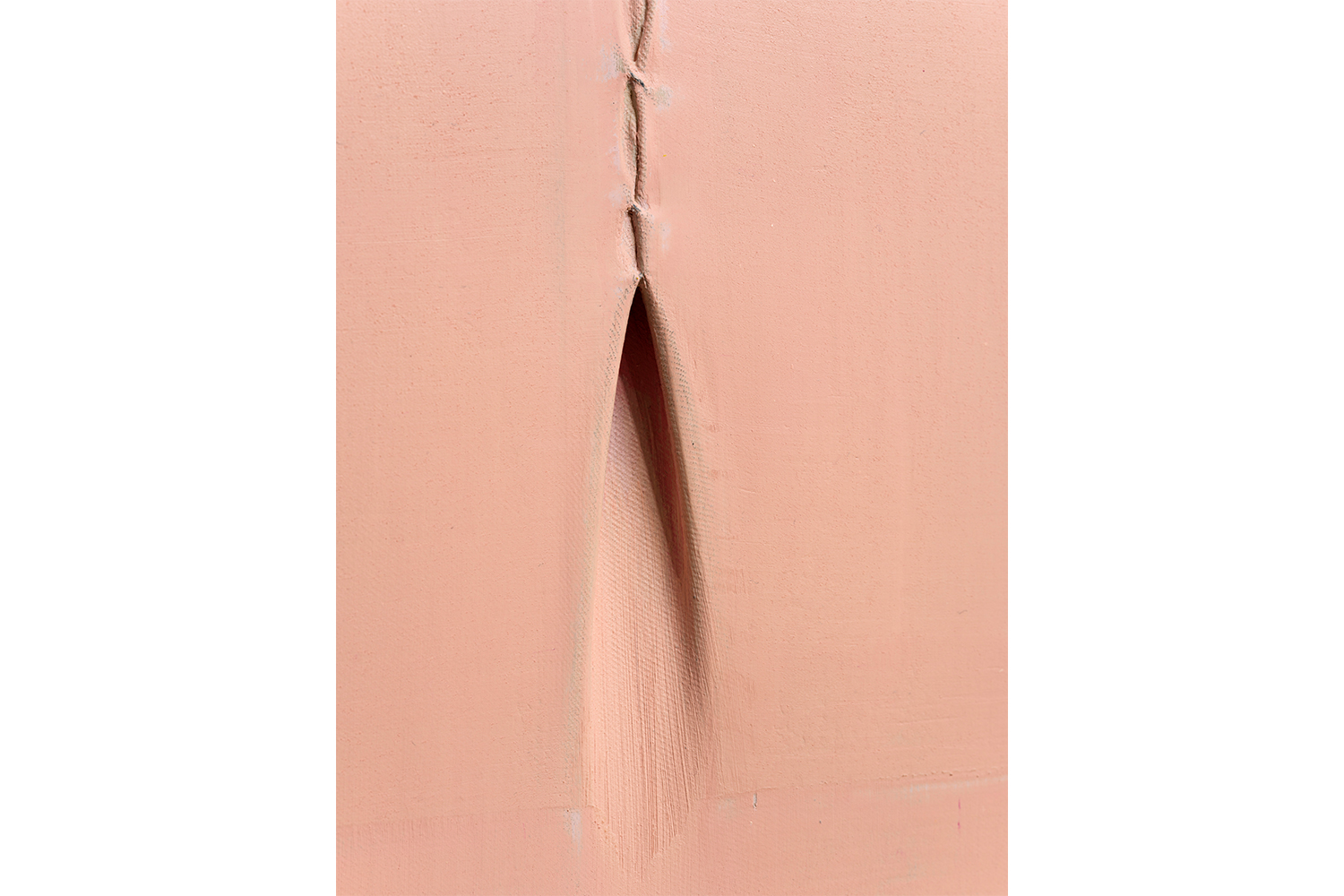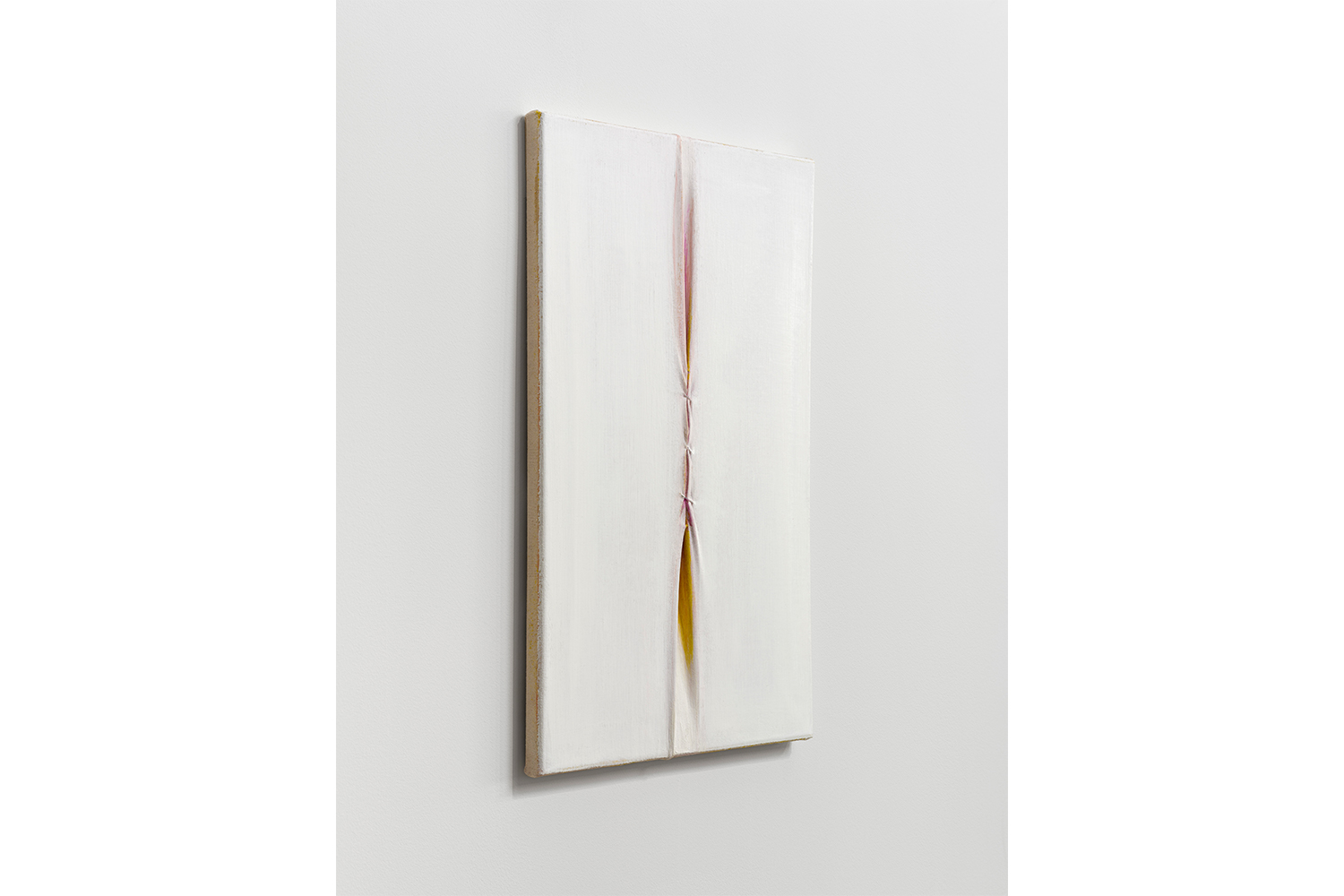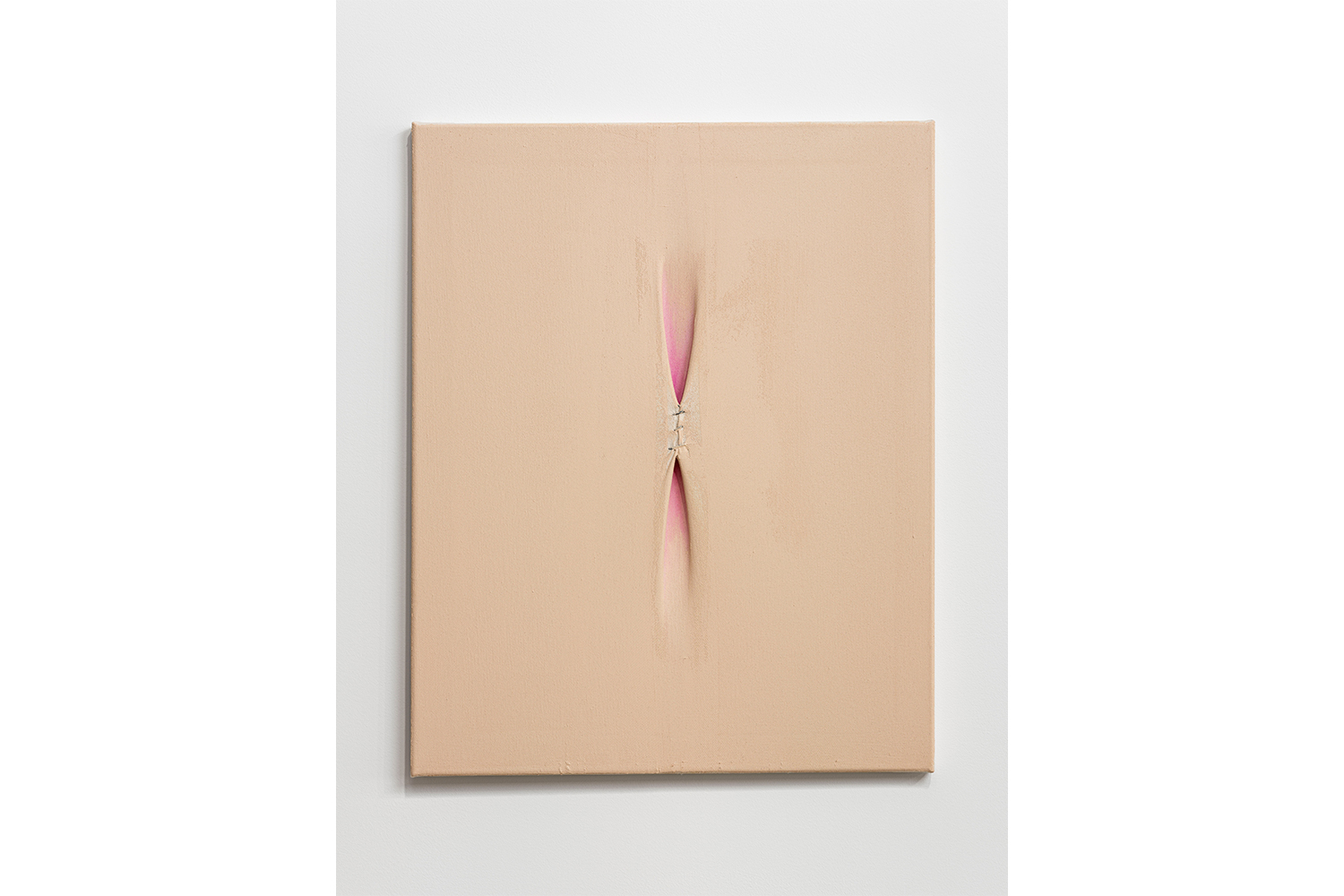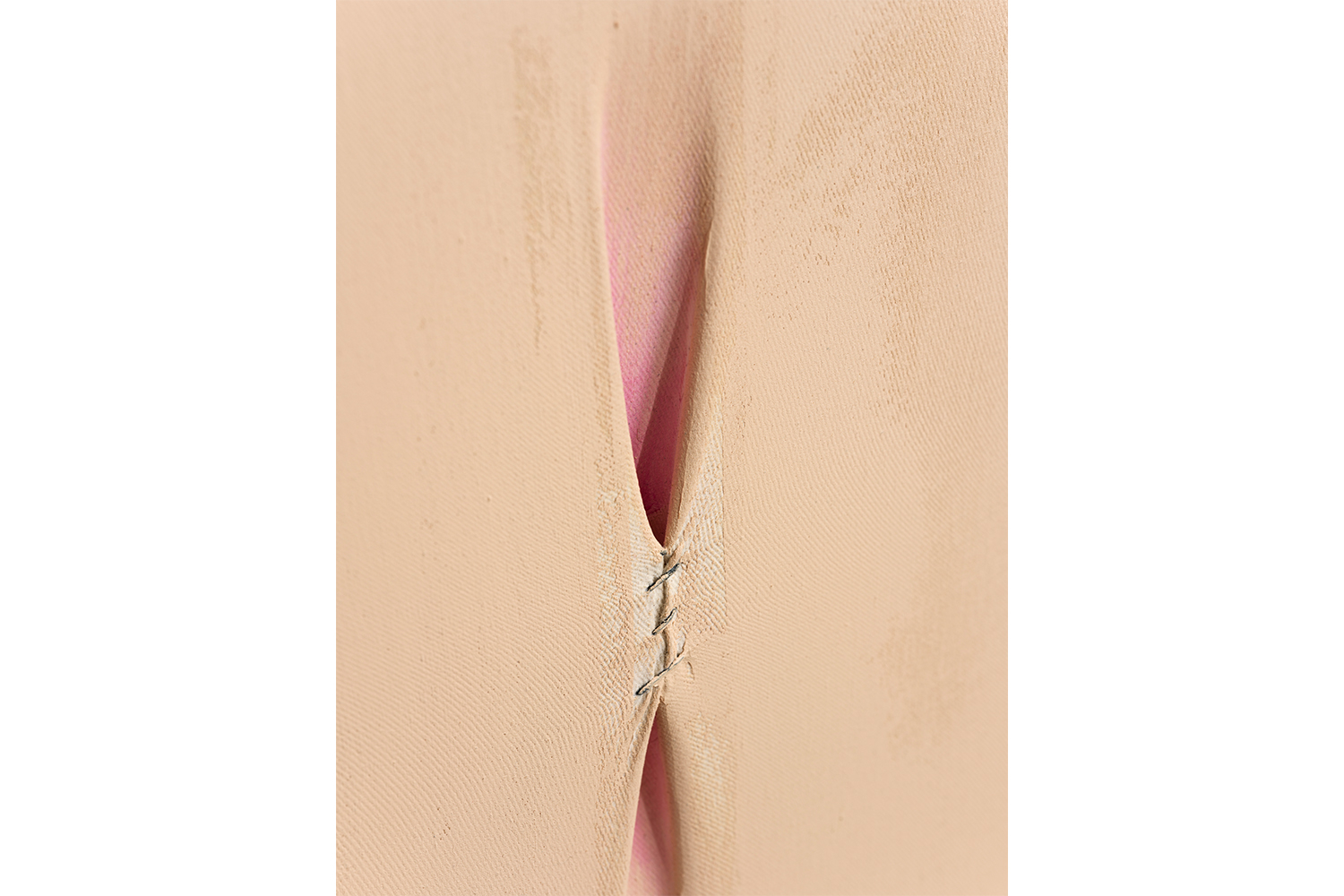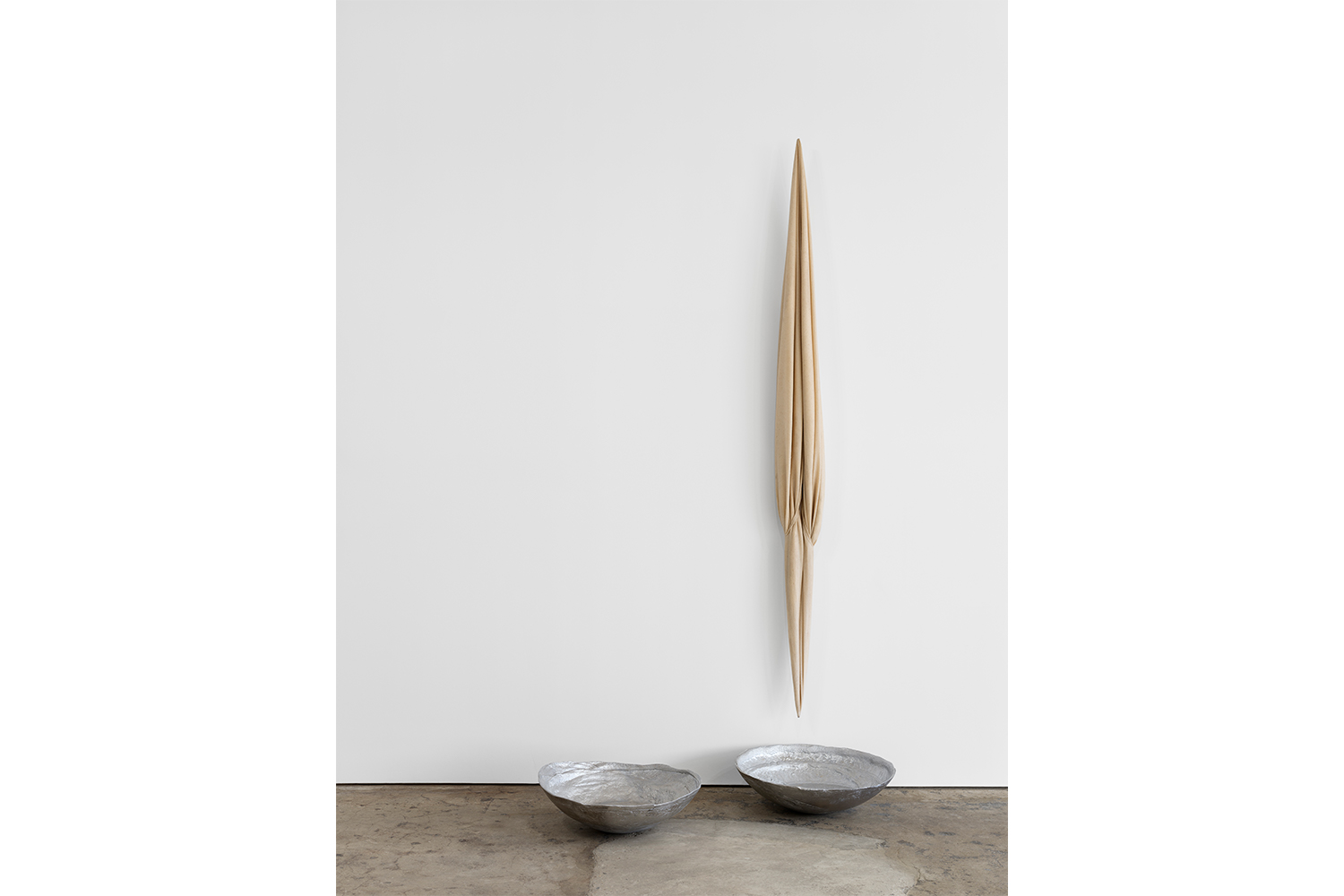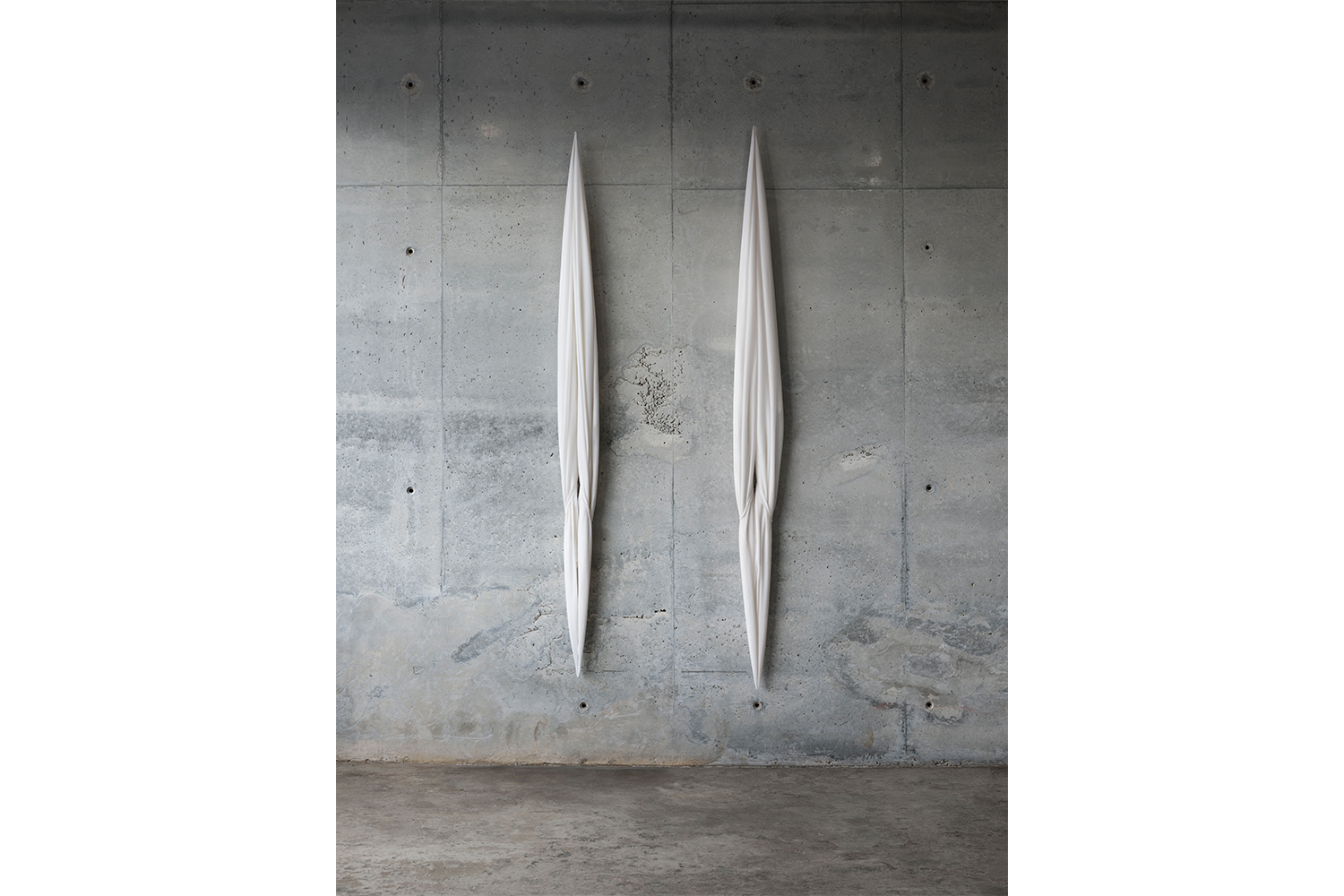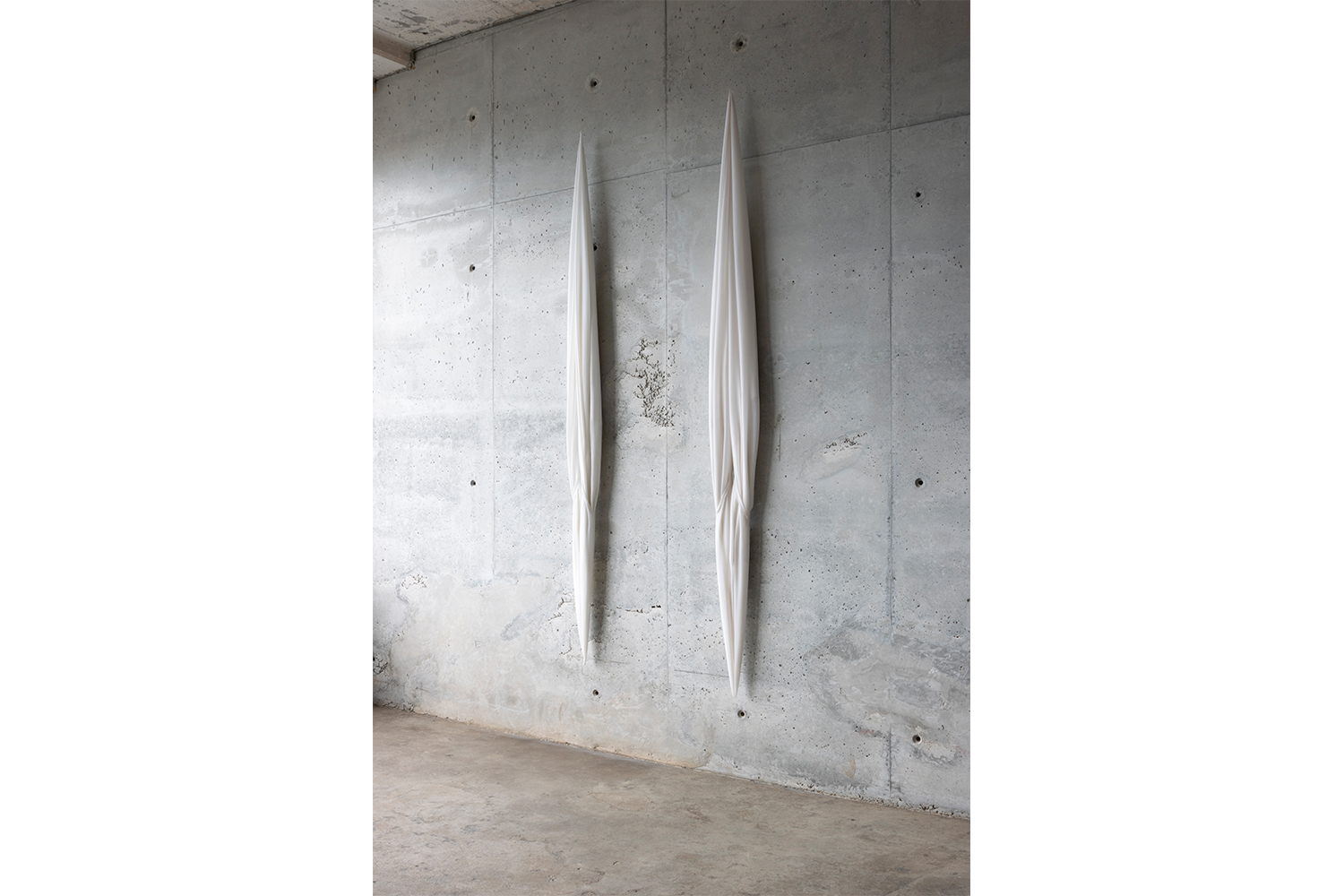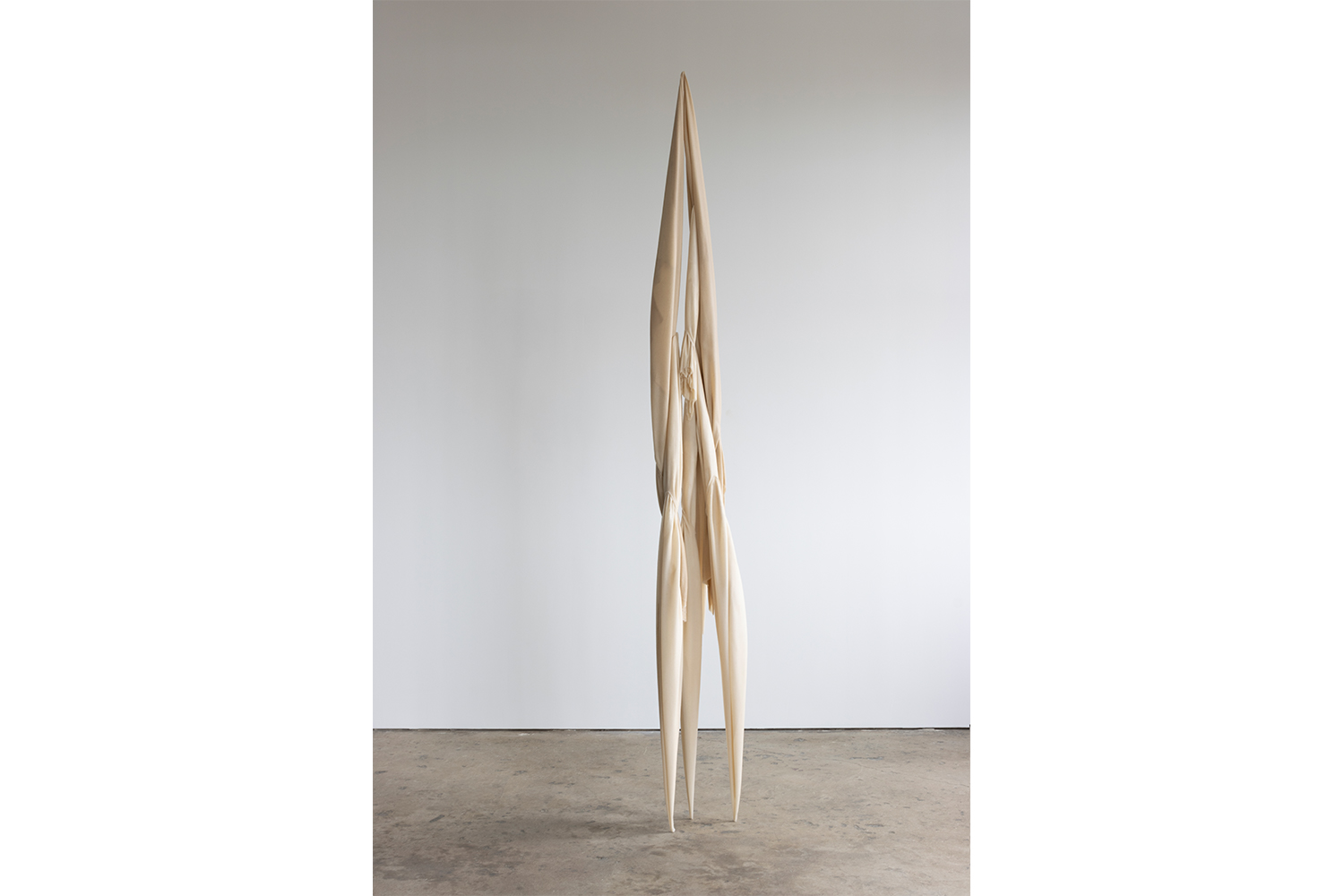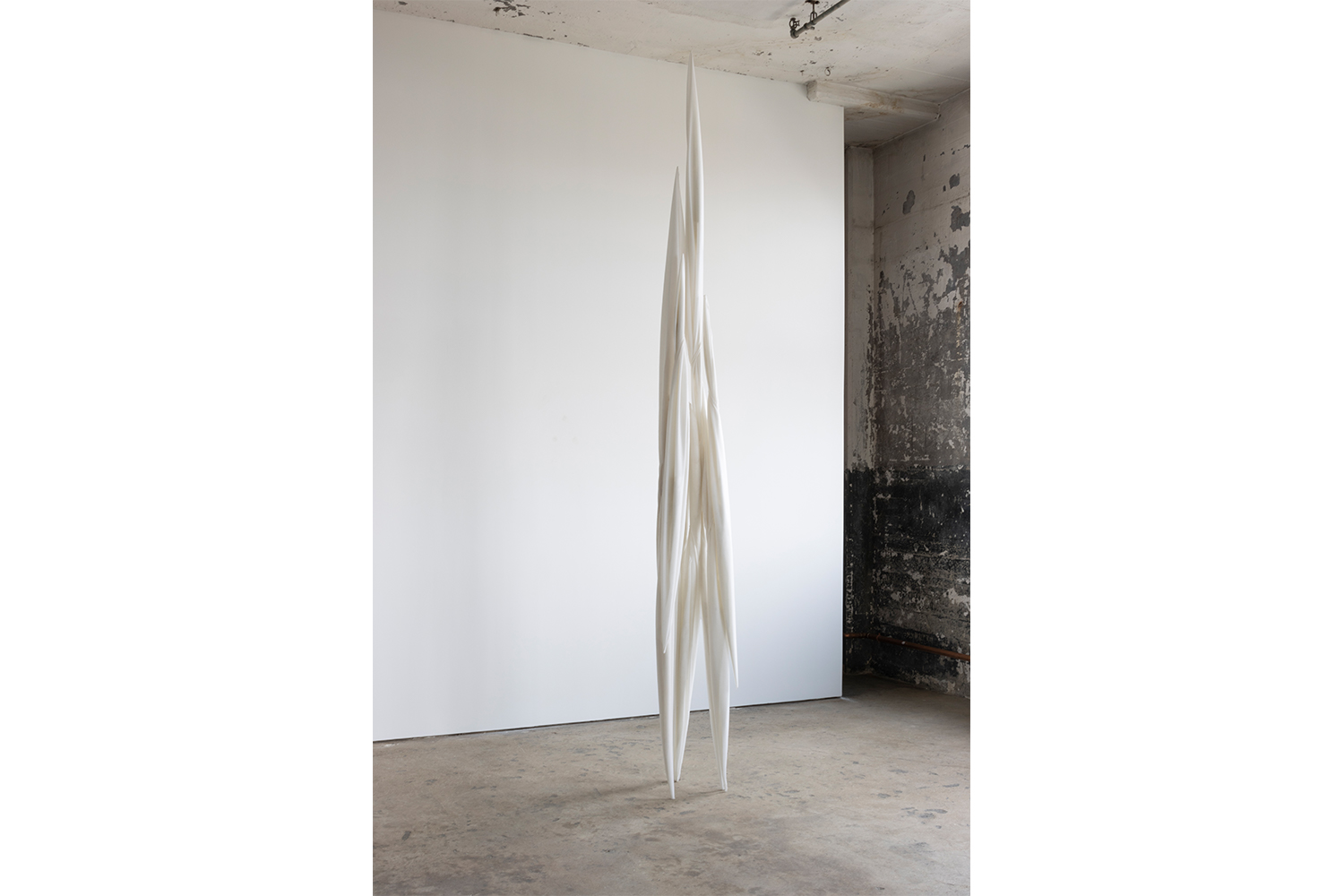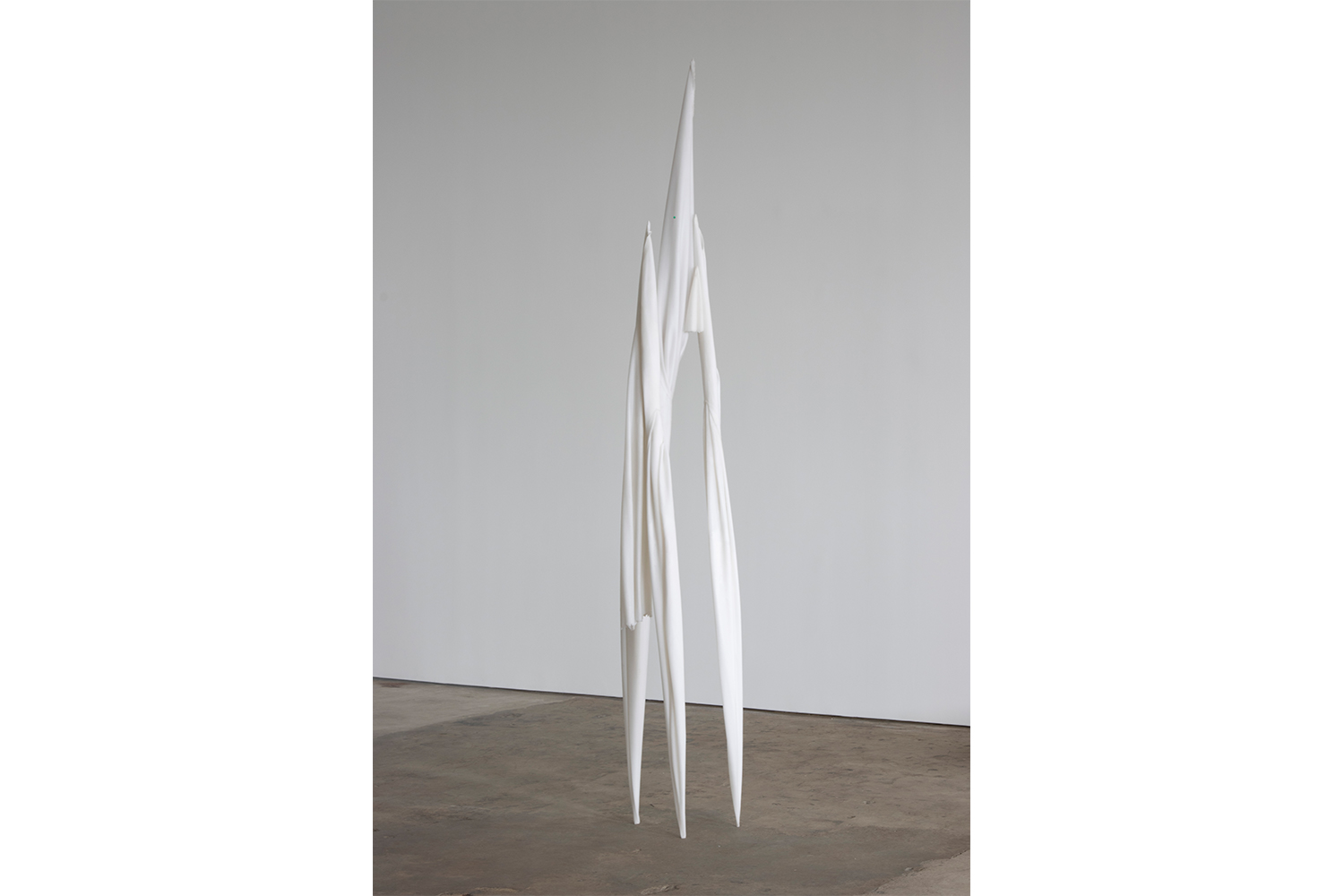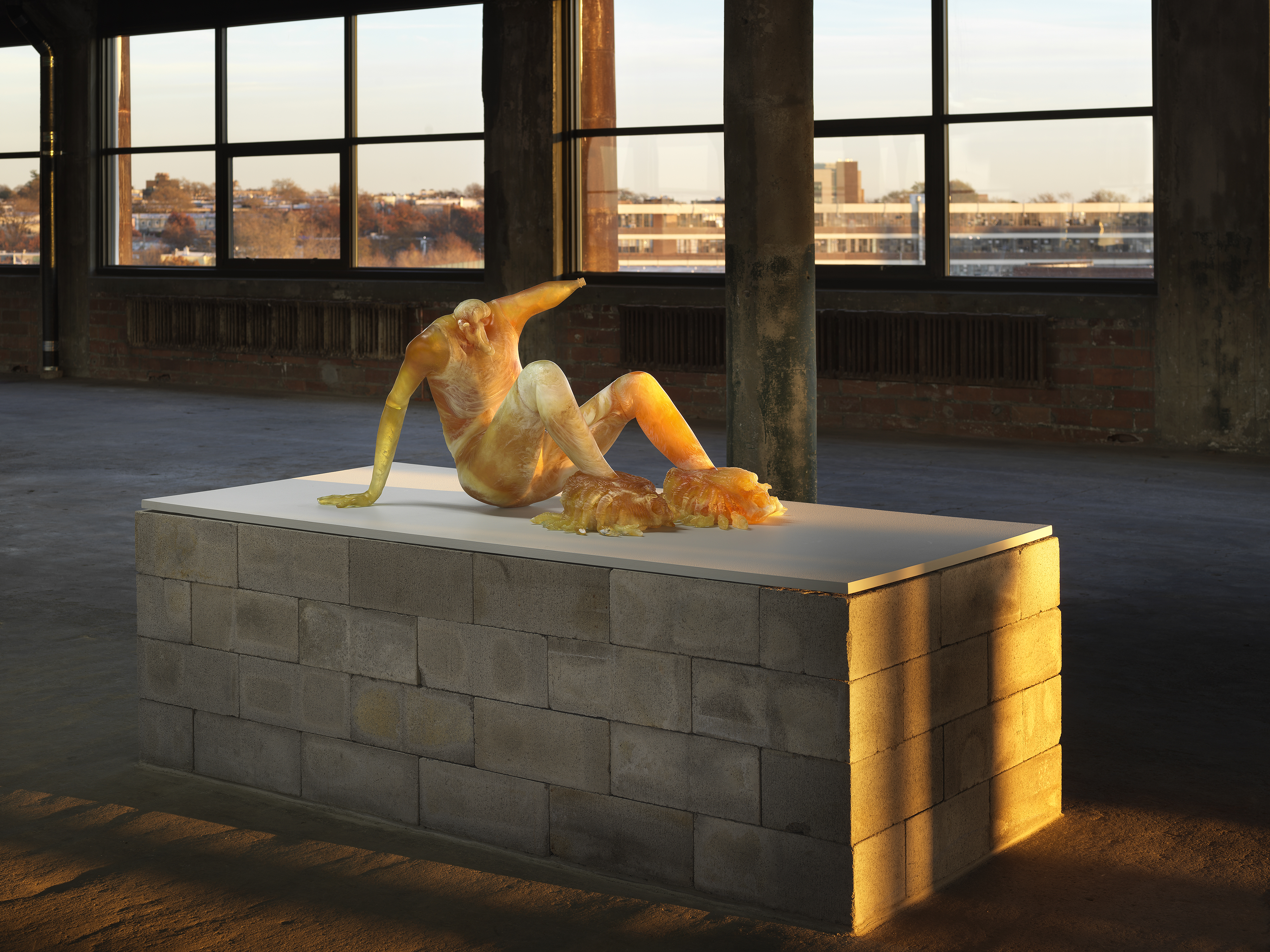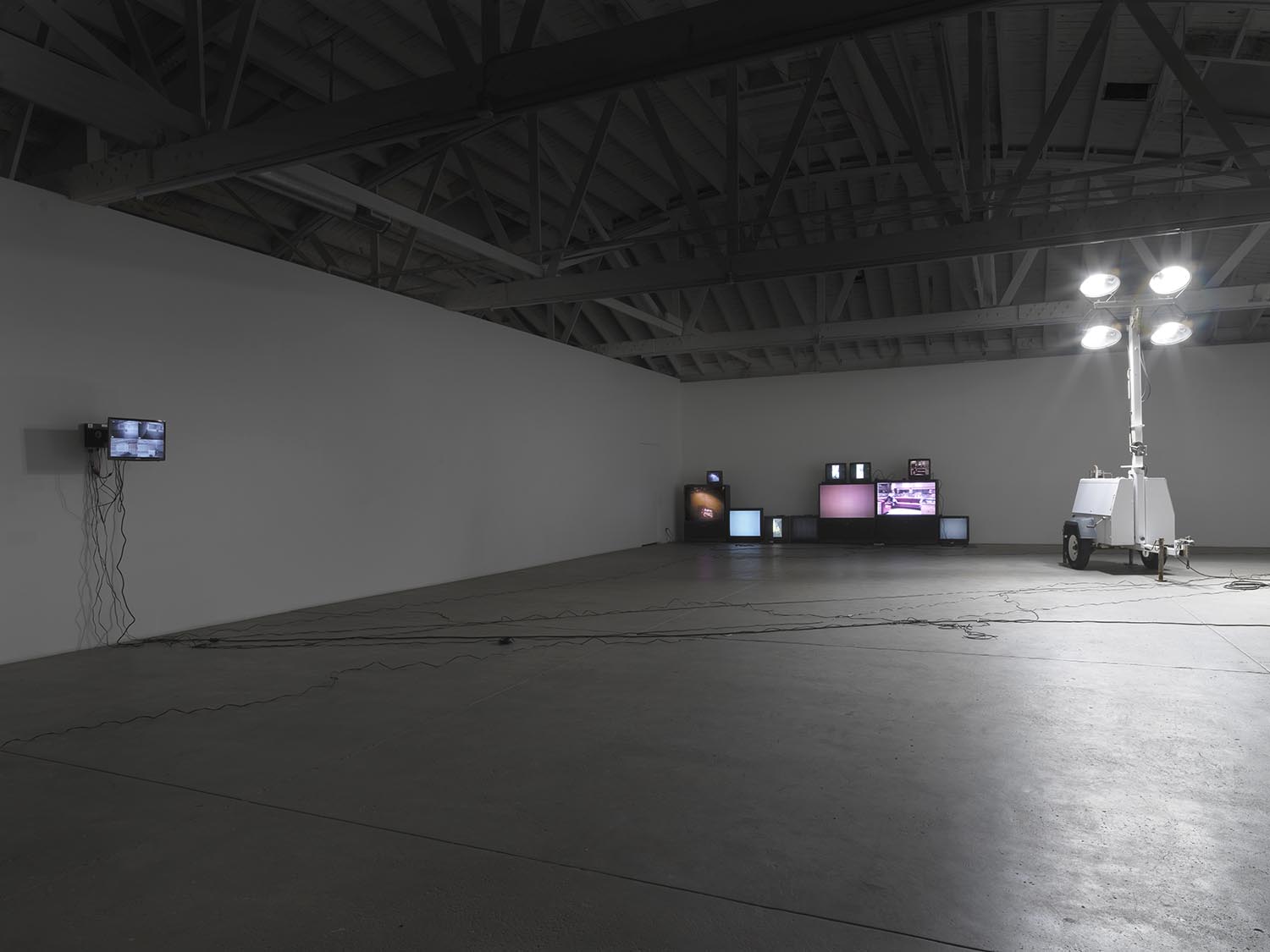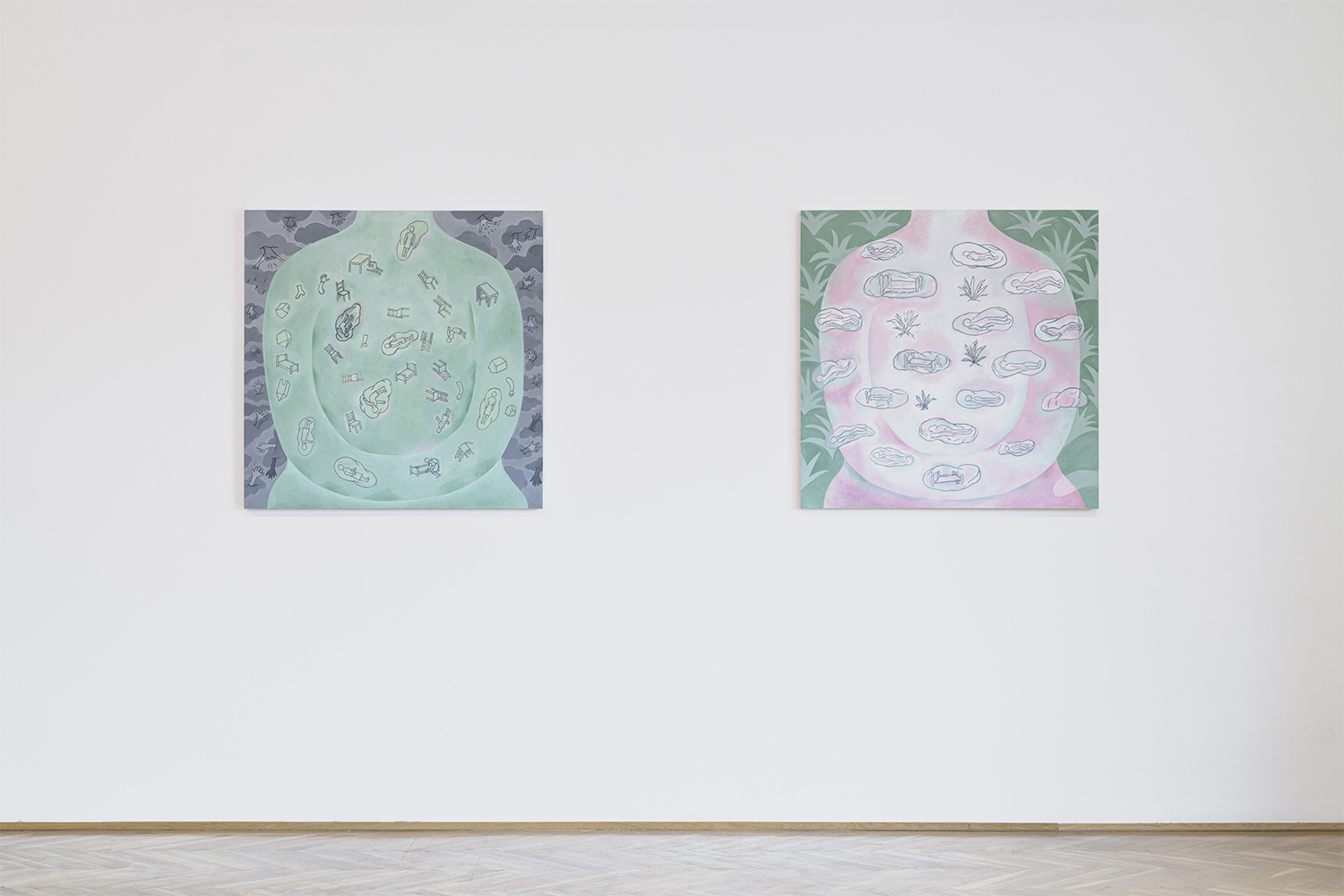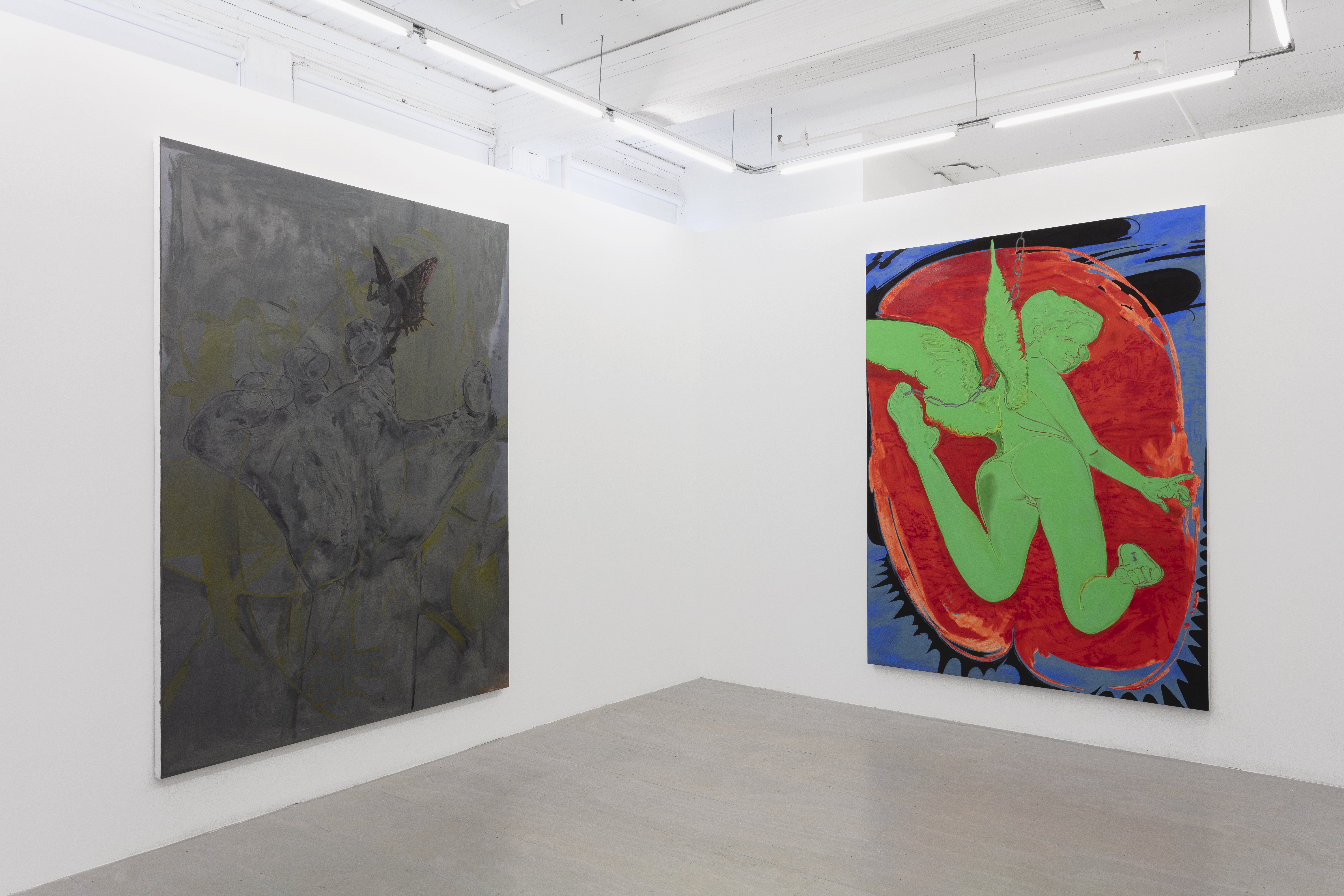Lucio Fontana’s creed “Art is eternal as gesture, but not as matter” echoes throughout Eli Ping’s show “BONE” at Ramiken. Fontana pierced the surface of the canvas, a gesture he believed would insert an infinite dimension of space into the temporal plane of the canvas. Ping’s work embodies this principle, further extending it into sculptural form through the folding and unfolding of materials, surfaces, and planes cradling the void. While Fontana’s gesture of laceration and puncturing of the surface was direct, explicit, and affected, Ping’s gesture is soft, contemplative, and built over time.
“BONE” consists of three types of work: canvas sculptures, aluminum bowls, and canvas paintings. Each of these serialized forms distills a single gesture: stretching, pooling, and stitching. Executed with such control and precision that the pieces appear untouched by the artist, “BONE” is installed against a backdrop of bruised concrete walls within a gritty industrial building, intensifying the otherworldly feeling of the show.
Two sculptural canvas pieces are arrested on the entry wall. In Mote (right) and Mote (left) (both 2020), the twisted and stretched canvases have been soaked in resin and stiffened while being hung from the ceiling. The surfaces of the pieces have been meticulously sanded to remove any traces of their making. This gesture of suspension evokes a vertical motion, making the forms feel torn between gravity and an ascending force.
The vertical gesture of the wall sculptures is multiplied in the “Monocarp” series of freestanding sculptures (all 2020). As the ascending forms join together, they come to resemble fractal formations, imbued with an otherworldly presence. The folds in the “Mote” and “Monocarp” works suggest the softness of the body, sensuality, and temporality. Contrarily, the materials — canvas and resin — invoke a tendency toward rigidity and synthetic permanence that renders the pieces ghostly, like husks emptied of content. Light enough to unground.
The defiance of gravity in the “Mote” and the “Monocarp” works is countered by the density, weight, and downward force of Ping’s untitled aluminum bowls (all 2020) that are scattered on the gallery floor. These perfectly round, open-faced spheres are formed through cycles of accrued molten metal. Left raw and untreated, the sculptures appear motionless, pooling both light and space.
At their core, Ping’s and Fontana’s practices explore ways to open up a spatial dimension within solid matter. Thinking about this relationship in metaphysical terms, Reza Negarestani proposes that for a solid to architecturally survive, it needs to contain the void, making every solid a symptom of the void it contains. Therefore the only way to address the void is through the solid. Whether it be in the soft creases of canvas and their twisted cavities, or in the stiff surfaces of metal that engulf circular volumes, each of Ping’s pieces can be read as a negotiation of boundaries in an attempt to define space.
Moving through Ping’s show, matter again and again becomes initiated by gesture. The gaze is guided toward ascendance, then is grounded and ultimately settles on the paintings that resemble sutured flesh caught in between two passions: transcendence and gravity.
On the far wall, three untitled framed canvases (all 2021) are folded to create slits painted in white, pink, and flesh tones. The gesture of suturing reads as twofold — both inflicting the void upon the surface and mending the void as if it were a wound. In the “Mote,” “Monocarp,” and untitled aluminum pieces, the aesthetic qualities and use of materials emerge from the enactment of gesture. The paintings seem an exception to this formal and material lucidity. The application of color and oil paint over the already performed gesture of folding and suturing reads as a visual effect and regresses into the treatment of canvas as a proxy of illustrative meaning rather than a place of spatial intervention.
Ping’s decade-long obsession with the slit as a gesture reveals an artist engaged in a patient and meticulous pursuit toward reduction. Through an iterative process, repeated over several shows, Ping’s work has become increasingly insistent upon gestural and material purity. In “BONE,” this purity is more prominent than ever, and his control over the materials more accomplished. If the goal is transcendence through a singular gesture, this show certainly feels like arrival.

